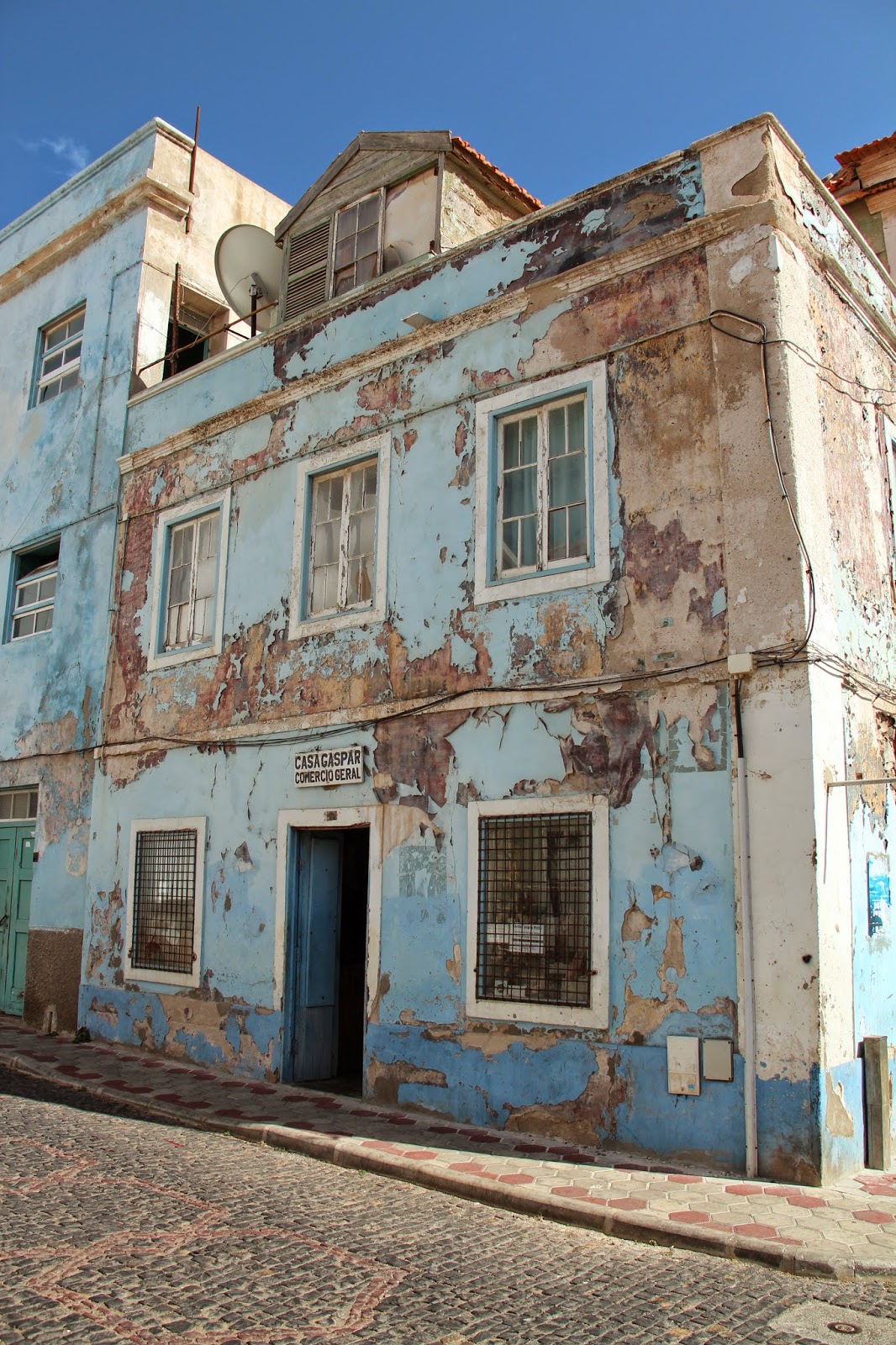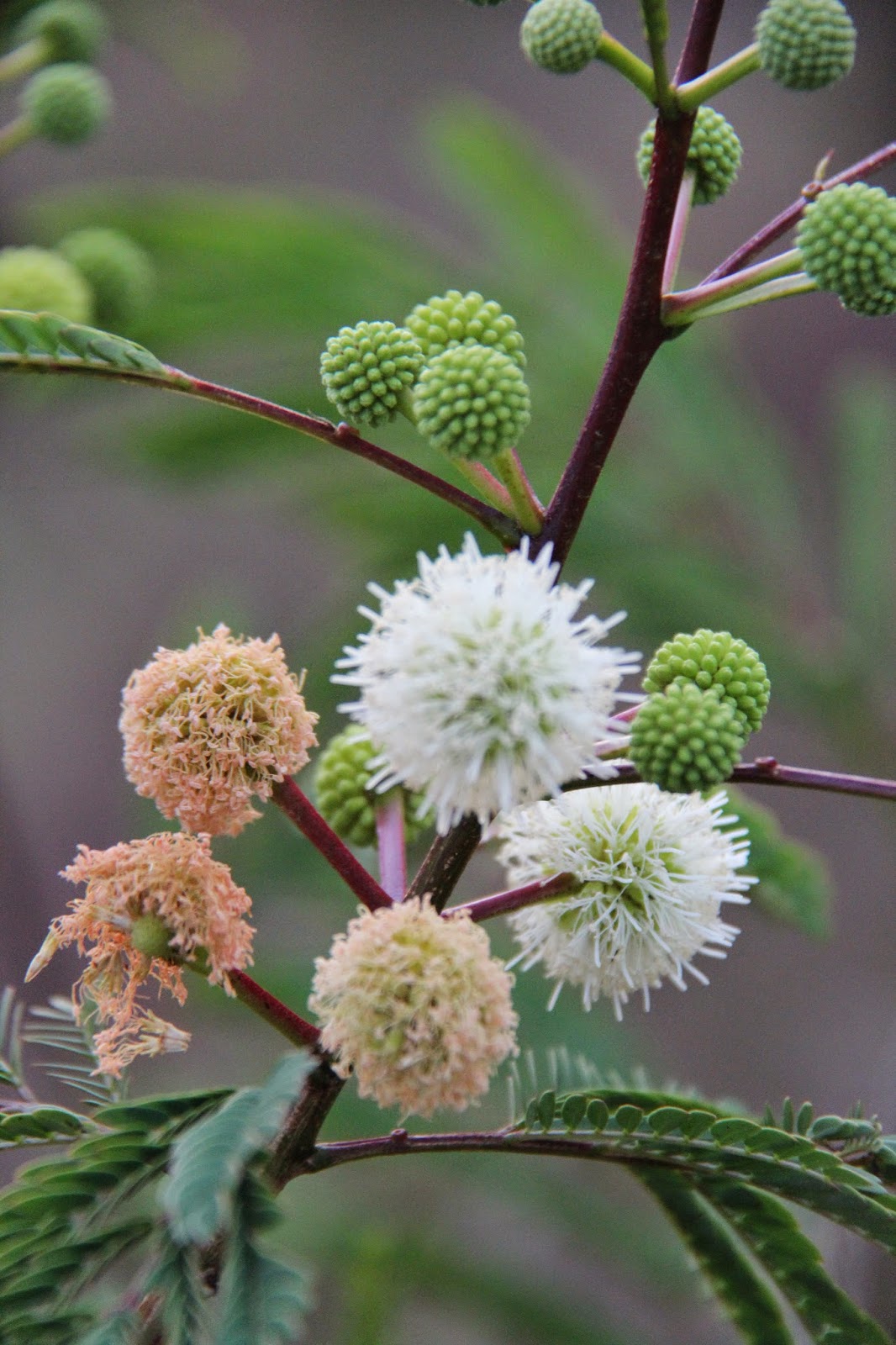//To the second post about Cape Verde (Road trip Santiago)//
//To the third post about Cape Verde (Santiago: Tarrafal)//
After more than a week on the road, discovering Santiago island, we took a flight to Mindelo. Mindelo is the principal town of São Vicente, and many say it's Cape Verde's secret capital. São Vicente is one of the Ilhas de Barlavento, the northern part of the country, about 200 km from Santiago. The flight takes less than one hour, but as regular readers of my blog might know, I don't like flying very much, despite many months of confrontation therapy. And while some people might enjoy flights in unusually small planes at night, with the lights in the cabin off and nothing at all to see outside the windows - well, I don't. But we landed safely and took a taxi to get to our hotel. Because we knew we would arrive late at night, we had booked in advance. Hotel Gaudi is one of the hotels in Mindelo offering european standard, and while our room was smaller than we expected, it was clean and the staff at the hotel was very friendly. So we were looking forward to a nice weekend in Mindelo - in hindsight definitely one of my favourite places in Cape Verde..

After a not so calm night (weekend nights in Mindelo are party time, obviously), we enjoyed the breakfast at the hotel's restaurant very much - papaya salad with goat cheese became one of the things I will always remember when thinking about this trip, so yummy!
We started our stay in Mindelo with a walk along the bay, shortly visiting the fish market (not my favourite place), getting lost in the alleyways between colonial-style buildings, coming back to the harbour (to check out the ferry schedules and see the rescue boats - Monsieur can't pass by any emergency vehicle, I assume this is called déformation professionnelle), and when we already thought about returning to the city centre we arrived at this incredible beach. White sand, turquoise sea, it could be a tropical paradise - if not for industrial companies right on the other side of the street. For me this is another example of how tourism does not really work yet in Cape Verde - of course the noisy and ugly industrial buildings have to be somewhere, but does it have to be right where most tourists will stand in awe and stare at this wonderful beach? We tried to ignore this contradiction and enjoyed the white sand and warm water very much, finally we could go for a swim again!
Back in the city, we were hungry, and it didn't take us long to find Casa Café. It's a really nice place, good coffee and some traditional dishes - of which you should have tried at least the Cachupa. Cachupa is Cape Verde's national dish, but in case you're looking for recipes, I think there are more than you can count and it is served in many different ways. I ate it in different locations and liked the one at Casa Cafè the best as it reminded me of the traditional meals from the region where I grew up - not because they taste the same, but because they follow the same principle: they are made of the things even poor people always had around, like flour (of different sorts), potatoes - adding whatever kind of (cheap) meat and vegetables you have at hand. I think there are so many different versions of these dishes because they have been varied by people who didn't have all ingredients at hand. And still they are considered traditional =) Yesterday's Cachupa is often fried in the morning and enjoyed for breakfast. I must admit I didn't try this...
Compared to Praia or even Tarrafal, Mindelo felt very different to us. The atmosphere is more lively, the city seems to be more welcoming. Some people say Mindelo is more "european", and I'm not exactly sure what they mean by this, but I still can understand why they say it. The history of São Vicente (and thus, Mindelo) is shaped by other milestones than Santiago's. Discovered in 1642, the very small island has only been used by the farmers of neighbouring Santo Antão as pasture for their livestock. The lack of water makes São Vicente difficult to live on, so it was more or less uninhabited, except for pirates who used the natural harbour as their hideout. The 19th century brought new people to São Vicente: Mindelo became a coal deposit for the steam boats of the British East India Company and later for the Royal Mail Steam Packet Company. Mindelo had about 1400 inhabitants in the 1850s, and when the first submarine communications cable was laid between Europe, Africa, India and North America, the city became an important communications centre for the British empire. Mindelo has seen people from all over the world, mostly seamen, and has become a cultural melting pot - while, for example, Santiago's diversity today originates mostly in slave trade. I don't know if these facts are able to still influence the atmosphere of a city, but to me Mindelo seems to be much more open towards people from other countries than Praia. Certainly the expats living in Mindelo make part of the difference, but then again there must also be many of them in Praia, the capital, with all the diplomatic and governemental institutions...
Talking about cultural melting pot, it would be a sin to write about Mindelo and not mentioning her: Cesária Évora. If you've never heard the name: don't google her. But next time you feel tired of living in a rainy, grey place kept hostage by European autumn or winter, lay down on your bed or in your armchair, click on this video and listen to Cesária Évora for 90 minutes. You might want to pack your bags and go somewhere warm afterwards, but your heart will be full of Cape Verdean sun for a while. Promise!
Mindelo shows the signs of decades of English colonial life - but the portuguese influence is clearly visible as well. Starting our tour at the fish market, we noticed it right away: the building that tries to look very portuguese.
If you've never been to Lisbon, you might not realise which building this one is meant to look like, the Torre de Belém. The one in Mindelo is also called Torre de Bélem, the portuguese built it because they didn't want the city to look too English. Nice try, but the tower in Mindelo really can't be compared to the one in Lisbon, which is one of the most fascinating buildings I have ever visited.
Walking along the seashore in Mindelo, we saw two monuments we wanted to know more about. Thankfully, our guidebook was well informed.
Both of them want people to remember the story of Gago Coutinho. He was an aviatic pioneer from Portugal and the first to cross the South Atlantic Ocean by air, from Lisbon to Rio de Janeiro (together with Sacadura Cabral in 1922). But why are there two monuments for this in Mindelo? Their plane didn't have enough fuel capacity to do the whole trip in one leg, so several stops were required. The one in Mindelo, however, was not intended from the start, but caused by technical problems. Thinking about how easily we cross the Atlantic in airplanes today, it is incredible that this adventure happened less than 100 years ago. They had to do emergency stopovers on small islands somewhere in the ocean and once they had to be rescued by a freighter because they had been forced to land on water in the middle of nowhere. They couldn't finish their journey with the airplane they started with, in fact they needed three of them! You can read a summary of this fascinating story here. And, even more interesting (I think) - here you can find some photos from when the two adventurers were welcomed in Mindelo.
It is not surprising that the beautiful colours of the sea often bring Mindelo's visitors back to the shore, but there are other interesting places to discover. For example Praça Amílcar Cabral (more about him in my last post), a square full of history but still very lively today. There you can find the museum of traditional arts, which we visited out of curiosity. It was really worth it. The building itself is stunning, and the exhibition shows a lot about Cape Verdes history and traditions. I like the Pano d'obra and was very, very tempted to buy one, but then again the women of Cape Verde wear it around their hips - and this would not be suitable for everyday life in Europe, I'm afraid. You can find more about the museum here (in French, but look at the pictures!).
Mindelo's indoor market is the most beautiful I have seen in Cape Verde, the building itself is worth seeing, and in there you can find a huge choice of fruit and vegetables as well as everything else you need to cook fresh dishes - including meat and fish. We bought piri piri chilies as a present for our friends and family members who like to cook, and the encounter with the market-woman who sold them was really funny and a good example for how communication works if people are open-minded and friendly, even if they don't understand each others' language. I asked the woman about the price for one of the little bags with piri piri and she showed me with her fingers, saying the number in portuguese (which is more or less as much as I understand, numbers up to ten, hello and good bye =) - and I told her I want to have three. When I wanted to give her the money, she didn't have the coins to give me the change, and just when I wanted to tell her it was okay, she gave me another bag of chilies and put my money in her pocket, laughing. It was a good deal - I only paid half the price for one of the chili bags - but the situation itself was really interesting and touching.
Later we stepped up to the second floor of the building. From up there, you have the nicest view on the market life, I could've watched for hours.
One of the last stops of our tour around Mindelo was the old school building Jorge Barbosa / Gil Eames. It is a fascinating place, run-down, but still it's clear that the school has a long story. Amílcar Cabral was a pupil there, and many other cape verdeans as well. You can find old photos of the building here.
We really enjoyed Mindelo, it felt a bit like breathing freely again after the slightly tense atmosphere we experienced in some places on Santiago. And we were excited to depart for the last island we wanted to visit: Santo Antão.











































































